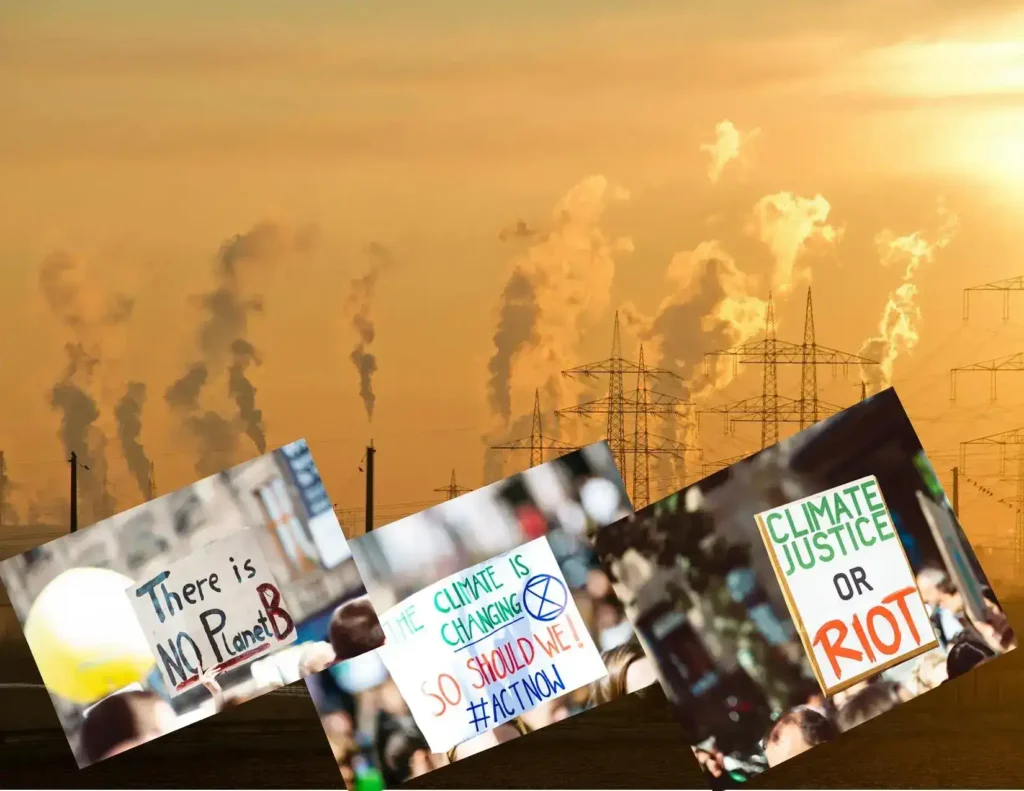
Understanding Paris Agreement A basic guide to understand Kyoto protocol Paris agreement and UNFCC www.agrieducation.pk climatechange carbontrading carboncredit carbonmarket carboncreditinpakistan.webp.webp
A Complete Guide to Understand The UNFCCC, The Kyoto Protocol and Paris Agreement
Hey guys! I hope you liked the part-1 of the topic. Here is part-2 with more details on Paris Agreement on climate change and its importance.
Weakness of the Kyoto Protocol
The first main reason
The protocol had similar approach to defining the country’s obligation. It still for the developed countries with the commitment to decrease their emissions and developing countries again could join this effort voluntarily. This approach became one of the reasons why some experts say that Kyoto Protocol was not really successful. First of all because by 2005 some developing countries became really big mirrors; China surpassed U.S. in emissions. So without developing countries like China and India (having strong obligation to decrease their emissions) the other protocol had quite little span of control. The protocol was responsible for only 18 of global emissions meaning that even if countries under obligation delivered on their commitments, for 100 and other countries continue with no emissions reduction, the global temperatures would still continue to rise.
The second main reason
The second reason was that developed countries thought like; the protocol covers our (developed countries) emissions and the protocol will not going to look for the emissions in developing countries. For example; Vietnam and many of African countries, so why not transfer our most polluting Industries, most polluting factories (from developed countries) there (in developing countries). And that’s exactly what started happening. Yes! The approach didn’t really pass the reality test on the financial support of developing countries. I didn’t really find any particular differences comparing to the convention but on implementation side there were quite a few differences. Actually, since now countries had very specific numeric goals. They had to establish credible National systems to track emissions and removals to help them and to make results of those systems comparable across the countries. IPCC created a common methodology for greenhouse gas and injuries. As previously countries had to report on the results once a year. Additional significant difference was in introduction of Market mechanisms to help countries meet the reduction goals. So what is the market mechanism in this case when countries set a limit on emissions?
Concept of Market Mechanism for Carbon Trading
The first carbon trading mechanism
The countries create something of value the Right to Emit. This is something that can be sold and bought. Market mechanisms provide an opportunity to do this. There were three of them. The first one is International Emissions Trading. As you remember, there were two groups of countries under Kyoto Protocol the first one is developed or industrialized who had direct obligation to decrease their emissions and the second is developing countries. This mechanism is applicable only to the first group. So how does it work? Let’s imagine we have Country ‘A’ and Country ‘B’. Country ‘A’ got the target to decrease their emissions but unfortunately they were not able to meet the target by the amount highlighted with the set phase. Country ‘B’ had the opposite situation they also got the target but they were able to surpass the target it means that now Country ‘B’ has some spare emission units by which it exceeded the target. Country ‘A’ can buy those units to at least partially close its gap of target.
The second carbon trading mechanism
The second one is Clean Development Mechanism. Near to me it seems much more fun because it includes not only financial transactions of selling and buying emission units but it also includes some real project, the real physical projects. This time cooperation of both groups of countries is required. Let’s imagine again we have developed country ‘A’ and developing Country ‘X’ in case developed Country ‘A’ is not meeting their goals they can say; if I cannot reduce greenhouse gases by the required amount within my country then why not help other country to decrease their greenhouse gas emissions. Those reductions will be included into my greenhouse gas inventory and that’s exactly what happens. Country ‘A’ can invest in clean infrastructure project and Country ‘X’, for example; build the wind farm or install solar panels as a result. Country ‘X’ will decrease its greenhouse gas emissions. Comparing to this scenario without the project and those emission units, Country ‘A’ now can include in their greenhouse gas inventories. Even though the idea itself is smart but there were quite a few arguments regarding this mechanism. The main argument was about the validity of the results. Emission unit is calculated for the project on theoretical basis and it’s quite hard to say; if this project will actually decrease greenhouse gas by promised amount which means it leaves some space for playing a numbers game.
The third carbon trading mechanism
The last mechanism follows Joint Implementation. It works quite similar to the previous one the Clean Development Mechanism. The Joint Implementation projects are done within the group of developed countries only. Another major difference was that in case of Kyoto Protocol cabinets to reduce emissions were legally binding countries had legal obligation to deliver the results. Even though at first sight it sounds like a good idea if you want achieve Real Results. But in reality back then climate change was still not the first priority problem and having legal obligation could force countries to abandon any involvement at all. That’s partially what happened.
Second phase of Kyoto Protocol
The Kyoto Protocol had two phases and the second phase was from 2013 to 2020. The second phase had to be much more aggressive. Now the goal was to reduce greenhouse gases by 18 times of 1990 level. Partially exactly due to legal binding obligations, this time less countries got involved. Only 29 developed countries and European Union decided to continue participate in implementation of the protocol. Despite all its shortcomings the Kyoto Protocol was a huge step forward in the field of international cooperation to combat climate change. Lessons learned became the basis for a new upgraded improved agreement. In 2015, a meeting was held in Paris and result of the meeting was the Paris Agreement.
Paris Agreement Signed
The agreement was signed in December 2015 and ratified one year later. The first commitment period started in 2020 and review of the results expected to be done every five years. This time agreement got ratified by 190 countries. Later U.S. withdrew from the agreement and rejoined again under new President Regime after election. So what’s about the goal? This time it said; we have to make sure that Global temperature will not be increased by more than 2 Degrees Celsius and better if we actually make an extra effort and keep it below from 1.5 Degrees Celsius. We have to achieve a point of net zero emissions by 2015 which means that amount of greenhouse gas emissions produced had to become equal the amount of greenhouse gases taken out of the atmosphere by natural means like trees or oceans or by human and introduced technologies.
Difference between Kyoto Protocol and Paris Agreement
Lessons from the Kyoto Protocol were learned very well and now all parties were under obligation to decrease their emissions both developing and developed countries. Level of commitment will rise of course but nevertheless all countries now under commitment to decrease their emissions and financial support. I didn’t find major differences versus the Kyoto Protocol except that now there is a numeric goal and 100 billion U.S. dollars Investments a year. Not only developed countries can become the donor but also others can join if they want to. Implementation site things also changed quite dramatically instead of setting top-down legally binding goals as it was done within the Kyoto Protocol. The focus is on flexibility and National ownership.
Now countries can set their own targets consistent with their level of development and technological advancement to make it work to allow countries is flexible on their targets and still at the same time to meet an overarching goal of the agreement. It was the same to focus on processes and make them even more robust than before. Even more aligned than before even more transparent and more comparable between the countries. In this case countries cannot put absolutely random figures in their National plans because it’s going to be obvious but except of just fact checks it gives much better mechanism for cooperation between the countries and sharing their learning best practices technological and Business Solutions. In case for some reason need to know in more details; how the implementation works and how those processes work? I highly recommend to check the Paris rulebook. This is exactly the set of guidelines on how implementation of the agreement is done. Moreover, over 280 scientists from IPCC helped to prepare an updated methodology for a greenhouse gas inventories based on latest science.
Improvement in Carbon Trading Market Mechanism in Paris Agreement
There are also improvements in Market mechanisms the thing is; I haven’t found like major methodological differences in mechanisms comparing to the Kyoto Protocol but from my understanding there is at least an effort to improve those mechanisms based on the loadings done. Of course one more major difference is that now commitments to reduce greenhouse gas emissions are not legally binding. There are some legal obligations to establish emissions tracking systems and conduct regular reporting but to actually deliver on the results and comply with the targets that countries calculated for themselves. There are no legal obligations.
Conclusion
Is the Paris Agreement important?
So let’s get back to the question is the Paris Agreement important? Well no matter how scary it is to admit that climate change is happening and this time it’s not just natural cycle. It’s the direct result of our actions. Unfortunately scientists already proved this a century ago and from year to year they already confirmed initial conclusions to combat this. Threat all nations will have to demonstrate the greatest integrity and cooperation ever shown and the Paris Agreement so far is the only mechanism to achieve this. I’m talking not only about the paper itself but also about the effort it represents. Actually it has an existential value for millions of species including us.
Guys! Thanks for reading. If you liked it, don’t forget to put your comment in comment section below.
About Author: M. Safeer A. Jafrey (Chief Agribusiness Consultant) Agri. Education Pakistan (BinQain Agro Services)
Acknowledged and Awarded By; UNIDO | EDI | PSF | ADB | TiE | PU | ATDC | Member Acumen Global Foundry | EIT Food Alumni
Source link
2024-02-14 03:22:49
Originally posted 2024-06-11 17:04:42.
Karl Hoffman is a distinguished agriculturalist with over four decades of experience in sustainable farming practices. He holds a Ph.D. in Agronomy from Cornell University and has made significant contributions as a professor at Iowa State University. Hoffman’s groundbreaking research on integrated pest management and soil health has revolutionized modern agriculture. As a respected farm journalist, his column “Field Notes with Karl Hoffman” and his blog “The Modern Farmer” provide insightful, practical advice to a global audience. Hoffman’s work with the USDA and the United Nations FAO has enhanced food security worldwide. His awards include the USDA’s Distinguished Service Award and the World Food Prize, reflecting his profound impact on agriculture and sustainability.





